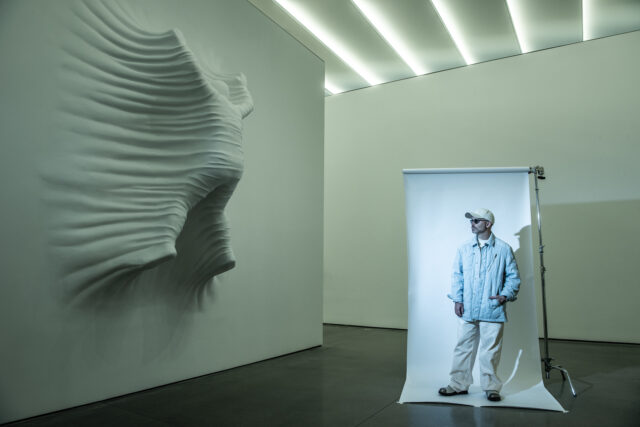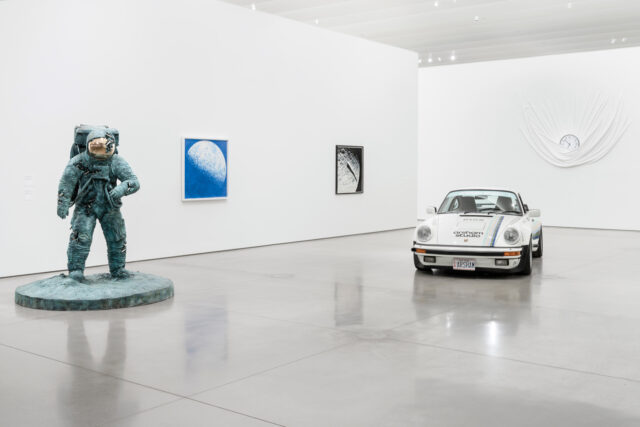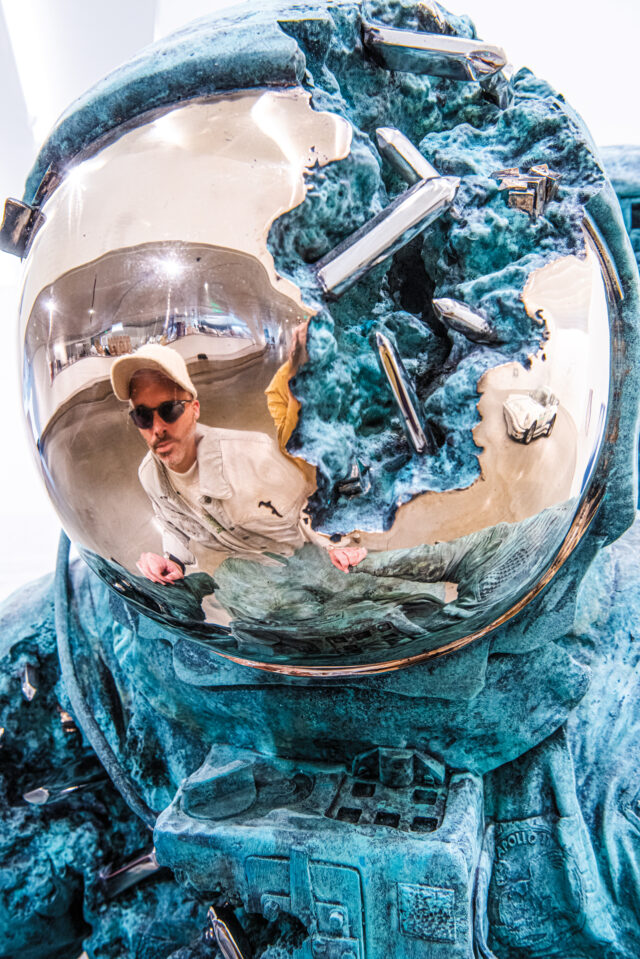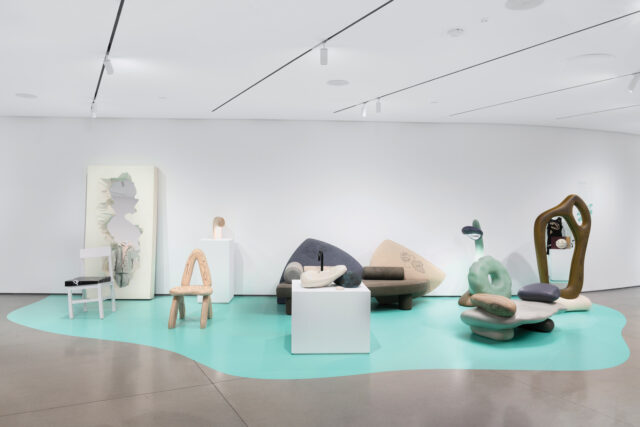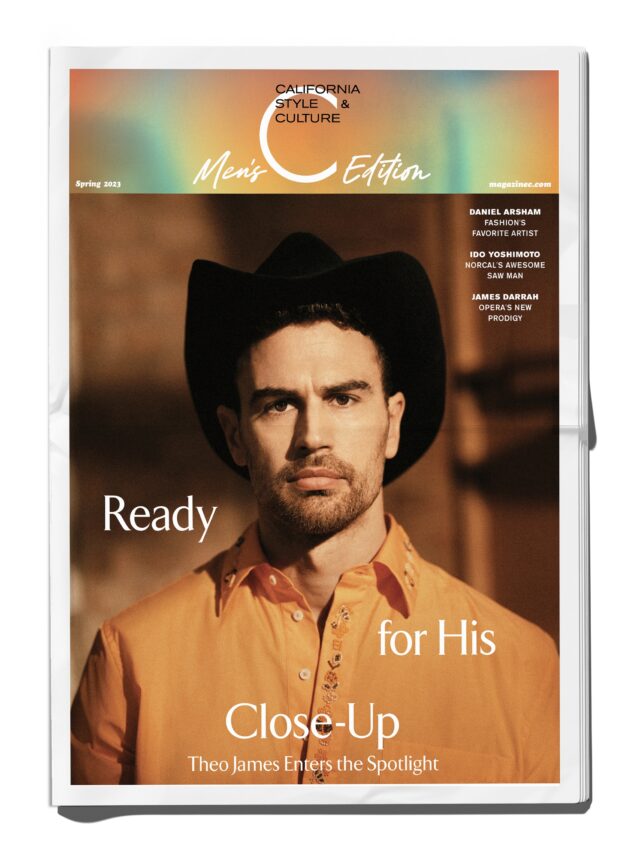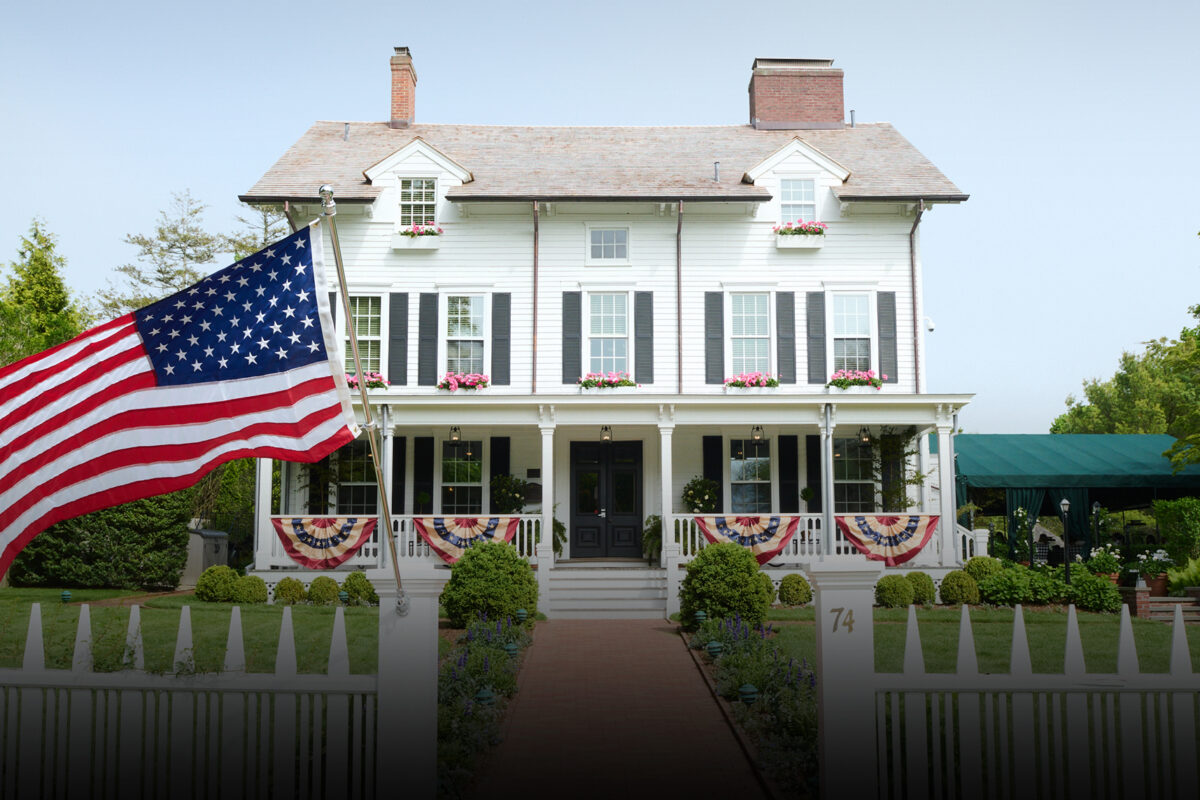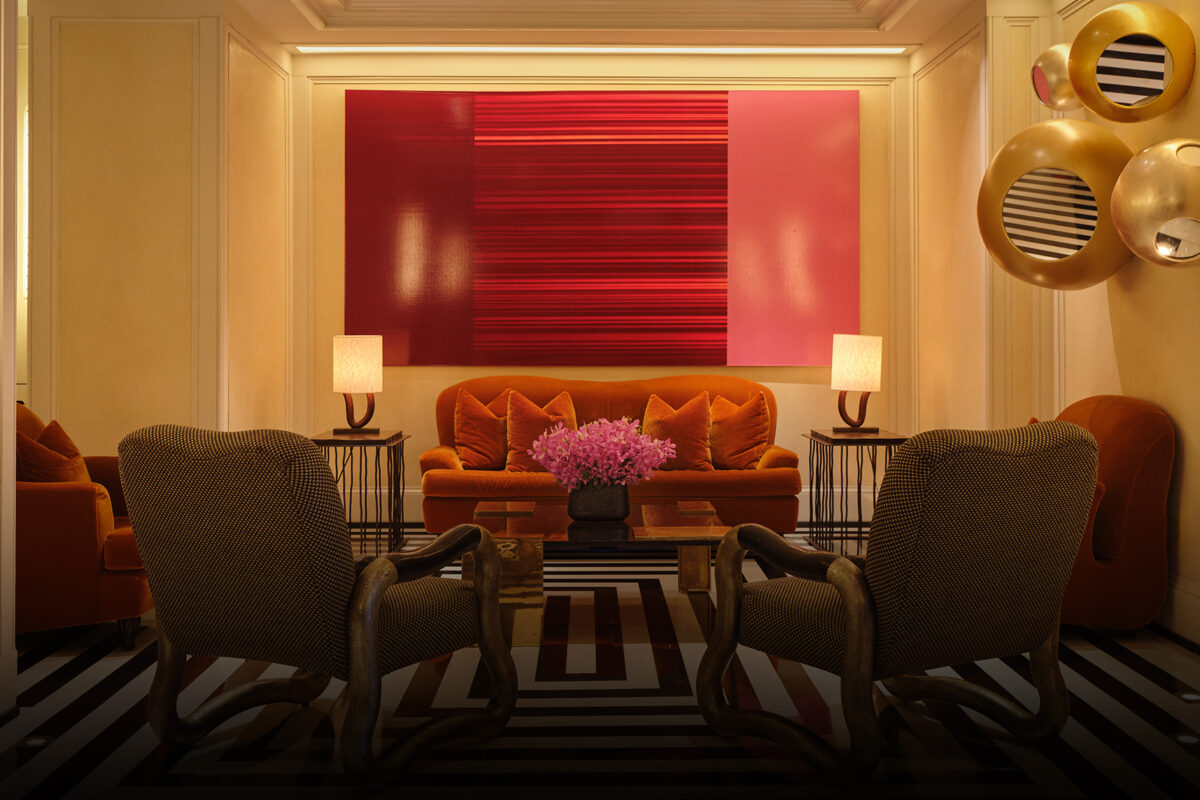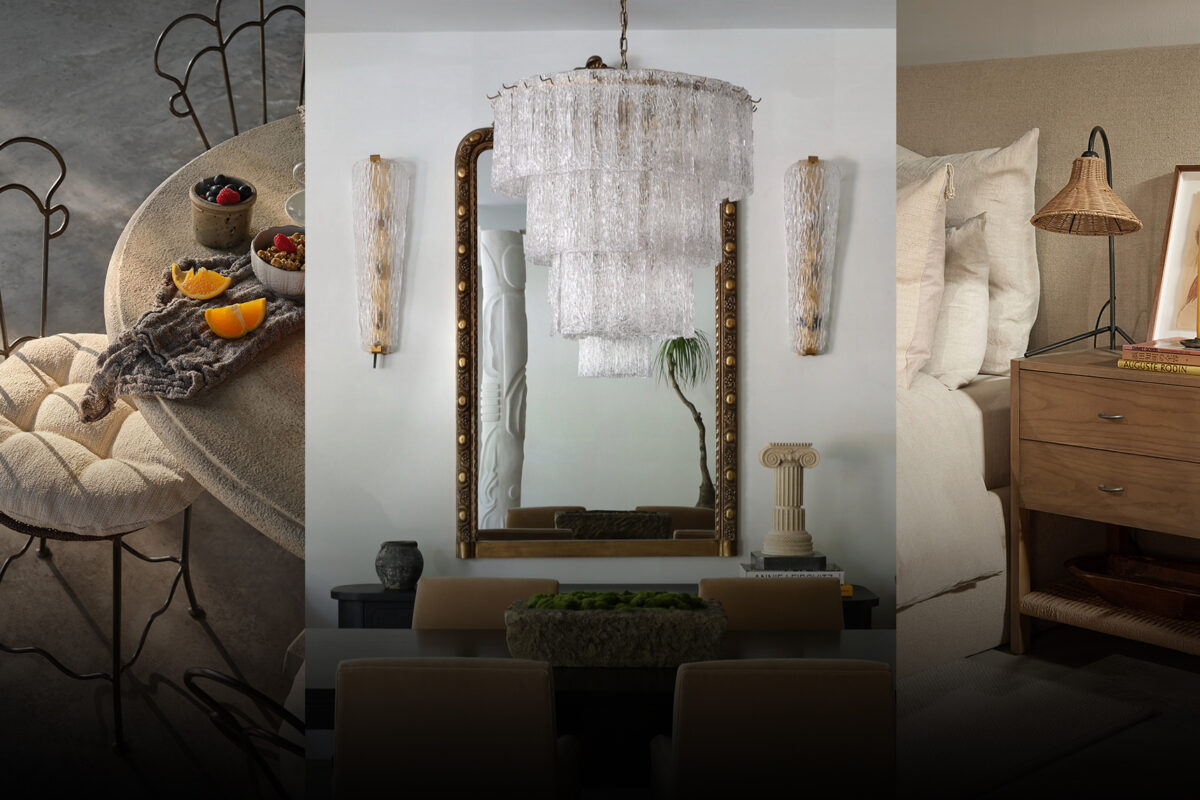His eroding sculptures are as desirable as the design icons on which he bases them; next up, he’s launching a fashion collection that follows suit
Photography by FRANK OCKENFELS
Words by MAX BERLINGER
The artist at the Orange County Museum of Art, Costa Mesa, on the eve of the opening of his Wherever You Go, There You Are retrospective.
Daniel Arsham may be based in New York, but a distinctly Californian flavor runs through his work. There’s the obsession with cinema, as demonstrated by his life-size sculpture of the time-traveling DeLorean from the classic film Back to the Future, or his obsession with cars, particularly the Porsche 911, which is synonymous with PCH. So perhaps it’s fitting that this year the Golden State is celebrating the 42-year-old artist in not one but two concurrent museum shows.
First there’s Wherever You Go, There You Are, on display at the newly opened Orange County Museum of Art, the first solo exhibition of his career at a major U.S. art institution (on view through June 4). Although it features the aforementioned DeLorean replica, it also makes the case for Arsham’s affinity for triaging commonplace objects as artifacts. Heavily featured among the 40-plus pieces are items from his Future Relic series, in which quotidian (if outdated) items—like an old Polaroid camera, a landline telephone, a boombox, and an audio cassette—are cast in serious, enduring materials like plaster alongside similar busts that recall ancient Greece or Rome. Many of these sculptures are crumbling, presented by the artist with a sense of decaying permanence or timeless gravitas, depending on how you look at them.
Additionally, Arsham has four car sculptures on display at Los Angeles’ Petersen Automotive Museum in a show called Arsham Auto Motive. The vehicles are presented in muted, creamy shades—Arsham is color-blind—and are punctured by corroded, dilapidated incisions, using elements like selenite, quartz, pyrite, and volcanic ash to manifest an unearthed effect, keeping with his themes of decay and erosion.
The artist has two concurrent museum shows this spring.
Originally from Cleveland, Ohio, Arsham and his family moved to Miami when he was young. Hurricane Andrew destroyed his childhood home. I ask if this event had any bearing on his fascination with ruin and architecture. “I guess it had some impact,” he says in his mellow timbre and thoughtful cadence. “It felt sort of magical, because there was no school and we were in the backyard cooking over a fire and there was no electricity.”
Arsham, who studied art at The Cooper Union in New York, explores varied media in fine art, architecture, performance, design, and film. He has done paintings and sculpture, and more recently has been known for his prodigious collaborations with fashion brands including Dior, Rimowa, and Tiffany & Co. His work, which marries classical forms and recognizable, often contemporary artifacts, have won him an A-list crowd of admirers, including Pharrell, Usher, and Jay-Z. His work is in the public collections of the Centre Pompidou in Paris, the Institute of Contemporary Art in Miami, and the Rhode Island School of Design, to name a few.
“I’m often looking for objects that encapsulate a time period, the zeitgeist. Vehicles are particularly adept at doing so”
DANIEL ARSHAM
The exhibition includes his fully customized 1975 Porsche 911; various works of sculpture from the past two decades.
One through line in the two Southern California shows is a lifelong fixation with automobiles. “I’m often looking for objects that encapsulate a time period, the zeitgeist,” he explains. “And vehicles are particularly adept at doing so because they contain things like a particular type of radio or material used on the interiors. I have this 1970s [Porsche] 911 that has corduroy seats, which we’d never use in a car today. It sort of feels like you’re stepping into a time machine. And there aren’t many other design objects that go through that sort of zeitgeist scenario.”
Arsham himself has an impressive collection of cars, and he often drives them from his home in downtown Manhattan to his large, Willy Wonka–like studio in Long Island City, Queens. “People definitely recognize the cars on the streets,” he says.
Perhaps his popularity comes from the way he treats all aspects of pop culture, from cinema and fashion to music and architecture, as objects worthy of art-world status. He’s equally at home toying with video game characters, such as his cheeky Pokémon sculpture, as he is in fashion spaces. Indeed, he now designs his own clothing line, Objects IV Everyday, and recently made his Paris Fashion Week debut at Galerie Perrotin. It’s a neat trick, as if to say art is always around us, not hanging in the wall of a museum or a gallery, but in the items we use on a day-to-day basis.
This broad-ranging and multipronged approach to art-making is one of the reasons Heidi Zuckerman, director and CEO of OCMA, chose Arsham as the first solo exhibition in the new museum. “We’re located across the street from South Coast Plaza,” she says, “and they have 24 million shoppers a year. I wondered, ‘What is their idea of art? How might we draw them across the bridge?’ I started thinking about Daniel’s practice: the magnitude of it, and all his brand collaborations. I really wanted people coming to the museum to have a much broader definition of what art is, and to include art and design and architecture and fashion. And I thought, here’s an artist we could do that with, based on the way his practice touches all these different categories in such an innovative and dynamic way.”
The artist reflected in the helmet of Bronze Eroded Astronaut (2022). Installation: Yubo Dong, ofstudio.
It’s notable, Zuckerman says, that the show is seeing an influx of young men who haven’t traditionally felt connected to the art world. “I think Daniel has a high level of transparency about himself,” she says. “I think he has a willingness to share his home and his studio, his practice and his approach. And I think he allows people to know him, to feel like they know him. And I think that sort of openness and availability really builds a community with his fans.”
Among the standouts in the OCMA show are a statue of an astronaut, his glassy gold visor reflecting a funhouse mirror version of the gallery back to the viewer, a basketball painted in Tiffany blue that pairs with a dreamy cerulean painting of a crater-covered moon. There’s a jacket made in collaboration with the musician The Weeknd, and a clock that looks as though it’s melting into its drooping backdrop. Themes emerge: time, technology, our capitalistic impulses.
“I never felt like the art world that I studied in school, that whole universe, accepted me. It’s much more inclusive now”
DANIEL ARSHAM
Arsham, now 20 years into his career, allowed the show, to a certain degree, to act much like that astronaut’s visor: to reflect back to him his own work—and surprise him. “[Heidi] drew parallels between things that I hadn’t necessarily directly connected before,” he says. “Sometimes she did it with material or color or subject.”
That sense of surprise extends to the reactions to the show by allowing the work to engender a variety of feelings or associations from the audience. “The nice thing about artwork in general is that it’s like, there’s no right answer to it,” he says. “Whatever you pulled out of it may not have been something I originally intended or was thinking about, but if somebody gets it, then that’s what’s there.”
The exhibition includes various works of sculpture from the past two decades.
Arsham has taken his interest in turning everyday items into artifacts to its logical conclusion with Objects IV Life, his tight offering of workwear-inspired apparel. “I’m trying to do something where the clothing is actually designed to age and patina,” he explains. “It doesn’t shy away from this idea that, no matter how hard a brand tries to create a quality product that is going to last forever, it’s going to get patinated. And so if it’s designed to capture that and actually embrace it, it’s going to look better over time.” The materials are meant to slowly change color or break down as you wear them, so the wearer participates and helps reframe an article of clothing not as a static item but as a living thing that evolves over time.
On the brand’s website, his apparel is described as being made with the “ethos of radical optimism.” I ask what, exactly, that means. “When I was thinking about approaching designing—adding to the conversation around clothing—it’s a little bit daunting,” he says. “And so, by making things that I like and that I think are going to last quite a long time, there’s an optimism that these objects are going to survive.”
Speaking of survival, in many ways his big California moment can be seen as a testament to surviving the whims of a fickle art world. It’s a world, in fact, he’s apart from, but that may be that’s changing (he is represented by Paris’ blue chip gallery Perrotin). “I never felt like the art world that I studied in school, that whole universe, accepted me,” he says. “But it’s much more inclusive now. And some of those people who were bitching about me collaborating with Adidas are wearing them. It feels like they are coming around now, and it’s nice.”
Feature image: The artist stands next to Eroded DeLorean (2018). Installation: Yubo Dong, ofstudio.
This story originally appeared in the Men’s Spring 2023 issue of C Magazine.
Discover more STYLE news.
See the story in our digital edition

